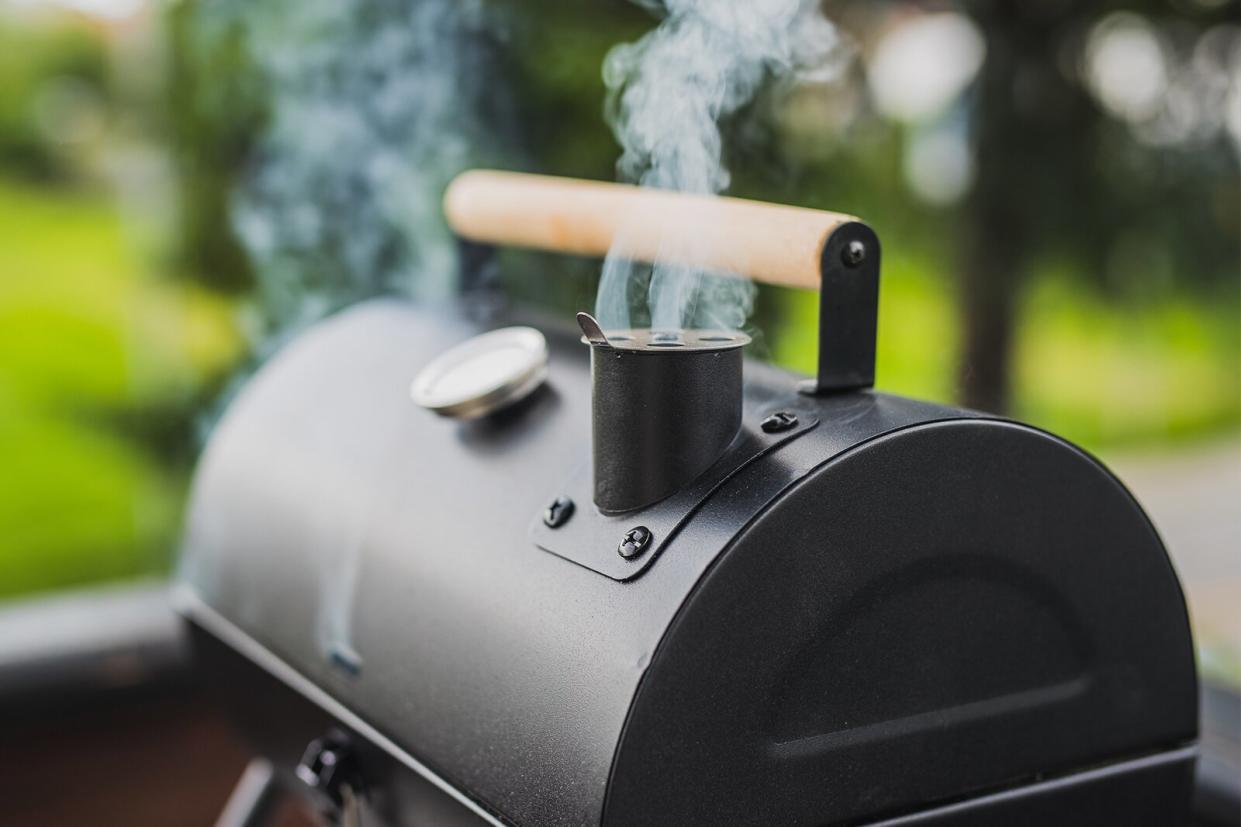How to Choose the Right Type of Wood for Your Smoker

Anze Furlan / Getty Images
While summer may be prime time for grilling, there's no reason not to make smoked brisket, smoked turkey, or even smoked pork ribs all year long. Smoking food goes beyond just grilling over direct or indirect heat, it offers an added kiss of flavor from wood smoke that you simply won't get from charcoal.
Related: How to Clean and Maintain a Smoker
You can smoke beef, pork, chicken, seafood, or vegetables on any barbecue grill by adding wood. The advantage to using a smoker instead of a grill is flavor. A smoker is optimized to slowly infuse your food with smoke at a lower temperature than grills, allowing you to increase the amount of time your food is in contact with smoke.
Types of Wood to Use
Hardwoods vs. Softwoods
Matt Horn the pitmaster of the James Beard Foundation finalist for Best New Restaurant Horn BBQ of Oakland, Calif., and author of Horn Barbecue: Recipes and Techniques from a Master of the Art of BBQ, uses seasoned white oak for his Central Texas-style barbecue. "I started using almond wood earlier on and have since switched to using white oak," Horn says. "White oak burns clean and hot. It's become my preferred choice of wood. My second option is almond, which is cheaper than oak, but also a good burning wood."
For home cooks smoking popular meats such as beef brisket, pork ribs, or turkey, Horn recommends using oak, or whatever wood is prominent in your region. "The oak won't over-smoke the meat and will hold consistent heat throughout the cook," he says. "I love the Maillard reaction you get from running a hotter temperature."
When it comes to experimenting with different kinds of wood, Horn has one hard and fast rule: stick to hardwoods. "Softwoods burn quickly, and due to their sap and higher moisture content, produce a black acrid smoke, which is unsuitable in a smoker, and for food," he says. In his cookbook, Horn says that hickory is commonly used in the Midwest and has a strong, sweetish flavor but that it can get unpleasantly bitter if you use too much. Likewise, he cautions not overdoing it with mesquite which can also overwhelm.
Fruit Woods
According to Horn, fruit woods are another popular choice for smoking. "Fruit woods tend to be better suited for chicken, fish, pork, and turkey," he says. "Typically, wood from fruit trees other than apple (cherry, peach, pear) burns faster and produces smoke that imparts a mild but distinctly fruity flavor that works best with products that do not have a naturally strong taste. If you are smoking something like brisket, consider adding cherry as a supplemental wood, as opposed to your primary wood, to give the meat a mahogany color."
Chef Alex Harrell of Commons Club at Virgin Hotels New Orleans agrees, noting that woods that create a milder flavor are best for fish, chicken, and vegetables. "Pecan wood, peach wood, apple wood, and cherry wood all produce milder flavor and don't overpower the delicate nature of seafood or chicken," he says.
Combining Different Types of Wood
Harrell recommends using a combination of pecan and fruit wood, such as cherry, peach, or apple to cook vegetables, fish, and chicken. Why the combination? It all comes down to timing. "You need to take into consideration the time you will be smoking or cooking because some woods burn a lot faster," he says. "For instance, fruit woods and pecan wood burn faster so you wouldn't use that for a big cut of meat that you'll be cooking low and slow. But oak and hickory are dense woods, so they burn slower. Therefore, you would use them for something that's bigger and tougher like brisket."
The percentages of wood will vary, but Harrell says, "If you really want notes of asserted smoke, you could use 70 percent of hickory or oak, then mellow it out with an apple wood or other fruit wood and you'd get a little nuance of that fruit wood flavor."
Foods to Smoke
Large cuts of meat, such as brisket, whole turkeys, chickens, or racks of ribs, are traditional to cook with smoke, but you can also smoke foods such as cheeses, vegetables, or fruits. "When cooking anything other than meats, remember to run a lower consistent temperature throughout the cook," Horn advises. "And make sure to keep the lid down and not lift too much, to avoid fluctuations in cooking temperature."
Adding Just a Hint of Smoke
You may have been served a drink or dish at a restaurant with a cloud of smoke, often brought to the table under a glass dome known as a cloche. To achieve this effect, you'll need a smoking gun, such as the highly rated Breville Smoking Gun. It's ideal for adding the aroma rather than the deep taste of smoke to things you wouldn't necessarily cook on a grill such as cocktails or sauces. You can also use it to make smoked butter or aioli to add a final touch of smoke to smoked meats or vegetables. It uses literally a pinch of wood chips and most recipes call for smoking for just a few minutes.

